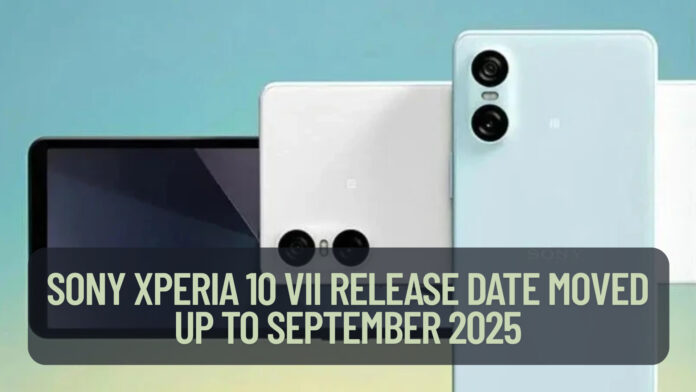Xiaomi has officially revealed which devices will not receive the highly anticipated HyperOS 3 update, leaving some fans disappointed. As the company gears up for a major software release built on Android 16, it’s prioritizing newer hardware to support advanced features like the “Liquid Glass UI” and AI-driven enhancements. If you’re wondering whether your Xiaomi, Redmi, or POCO device will get the HyperOS 3 update, this article breaks down the ineligible models, what’s driving Xiaomi’s decision, and what to expect from this next-gen operating system.
Why Some Devices Won’t Get the HyperOS 3 Update
Xiaomi’s HyperOS 3 update is set to bring a sleek new interface, improved performance, and smarter AI capabilities to its ecosystem of smartphones, tablets, and wearables. However, these advancements come with a catch: they demand more robust hardware. According to Xiaomi, older devices lack the processing power or graphical capabilities to fully leverage the HyperOS 3 update’s cutting-edge features. This strategic shift allows Xiaomi to focus development resources on devices that can deliver the full potential of HyperOS 3, ensuring a smoother and more consistent user experience.
The decision aligns with industry trends, as companies like Samsung and Google also phase out older models to optimize for newer software demands. While this may frustrate some users, it’s a necessary step to keep Xiaomi’s ecosystem competitive in 2025 and beyond.
Xiaomi Devices Excluded from HyperOS 3 Update
Based on Xiaomi’s official announcement and insights from tech sources like XiaomiTime, several popular models across Xiaomi’s flagship, mid-range, and budget lines will not receive the HyperOS 3 update. Below is a detailed breakdown of the affected devices.
Flagship Models Left Behind
The Xiaomi 11 series, launched in 2021, is one of the most notable casualties. Despite its continued popularity, the entire lineup, including the Xiaomi 11 Lite 5G NE, will not support the HyperOS 3 update. These devices, while still capable for daily tasks, fall short of the hardware requirements needed for the new OS’s advanced graphics and AI features.
Redmi Series Facing the Cut
The Redmi lineup, known for offering excellent value, also sees significant exclusions:
- Redmi Note 12 Series: This includes models from the Note 12 5G to the Note 12 Pro+. These devices, popular for their affordability and performance, will remain on HyperOS 2 or earlier.
- Redmi K50 Series: Excluding the K50 Ultra, all other K50 models are ineligible for the HyperOS 3 update due to hardware limitations.
This decision may disappoint Redmi fans, as the Note and K series are staples in Xiaomi’s budget and mid-range offerings.
POCO Models Missing Out
POCO, Xiaomi’s sub-brand known for high-performance, budget-friendly devices, also faces cuts:
- POCO M5 Series: These entry-level phones won’t see the HyperOS 3 update.
- POCO X5 Series: Another popular budget series excluded from the update.
- POCO F4 Series: Despite their powerful specs at launch, these models are also left out.
POCO users, who often prioritize performance on a budget, may find this news particularly frustrating, as their devices won’t benefit from the HyperOS 3 update’s performance boosts.
Tablets Affected by the Update Policy
The Xiaomi Pad 6, a well-received tablet, is another device that won’t receive the HyperOS 3 update. Xiaomi cites performance constraints as the reason, as the tablet’s hardware can’t fully support the new OS’s demands. This exclusion may push tablet users toward newer models like the Xiaomi Pad 7 Pro, which is confirmed to receive the update.
What HyperOS 3 Brings to the Table
For devices that do qualify for the HyperOS 3 update, there’s plenty to be excited about. Built on Android 16, this update promises a host of improvements designed to enhance user experience across Xiaomi’s ecosystem. Key features include:
- Liquid Glass UI: A visually stunning interface with translucent panels, background blur, and smooth animations, creating a premium, iOS-like aesthetic.
- AI-Powered Enhancements: Smarter resource management, personalized settings, and advanced AI tools for tasks like real-time translation and voice control.
- Improved Performance: Faster app launches, better multitasking, and optimized battery life for demanding tasks like gaming.
- Ecosystem Integration: Enhanced HyperConnect features for seamless interaction between Xiaomi phones, tablets, wearables, and smart home devices.
These features require significant processing power, which explains why Xiaomi is limiting the HyperOS 3 update to newer models like the Xiaomi 15 series, Redmi K80 series, and POCO X7 series.
How to Check If Your Device Is Eligible
If you’re unsure whether your device will receive the HyperOS 3 update, Xiaomi recommends using tools like the MemeOS Enhancer app, available on the Google Play Store, to check compatibility based on your device’s specs. You can also visit Xiaomi’s official website or HyperOSUpdates.com for the latest information on eligible devices and release schedules.
To manually check for updates, navigate to Settings > About Phone > System Updates and tap Check for Updates. If your device is eligible, you’ll receive an OTA (Over-the-Air) notification when the HyperOS 3 update rolls out, expected between July and October 2025.
What to Do If Your Device Isn’t Compatible
If your Xiaomi, Redmi, or POCO device is on the ineligible list, you have a few options:
- Stick with HyperOS 2: Many excluded devices will still receive security patches and minor updates, ensuring they remain functional and secure.
- Upgrade to a New Device: Consider upgrading to a newer model like the Xiaomi 15 or Redmi Note 14, which are guaranteed to receive the HyperOS 3 update.
- Explore Third-Party Apps: Apps like MemeOS Enhancer can add some HyperOS-like features to older devices, extending their usability.
While it’s disappointing to miss out on the HyperOS 3 update, Xiaomi’s focus on newer hardware ensures that compatible devices deliver a top-tier experience.
Why This Matters for Xiaomi Users
Xiaomi’s decision to exclude popular models from the HyperOS 3 update reflects a broader trend in the smartphone industry, where software updates are increasingly tied to hardware capabilities. While this ensures a high-quality experience for supported devices, it can leave users of older models feeling left behind. If you’re affected, weigh the benefits of upgrading versus continuing with your current device, which may still perform well for everyday tasks.
For those whose devices are eligible, the HyperOS 3 update promises to elevate the Xiaomi experience with faster performance, a refreshed design, and smarter features. Stay tuned to Xiaomi’s official channels and tech blogs like XiaomiTime for the latest updates on the rollout, expected to begin as early as July 2025.
Also read: Huawei’s MateBook Fold: The Game-Changer That Could Redefine Laptops and Challenge Apple and Samsung
Final Thoughts
The HyperOS 3 update marks an exciting step forward for Xiaomi’s ecosystem, but it comes at the cost of leaving some popular models behind. Devices like the Xiaomi 11 series, Redmi Note 12 series, POCO F4 series, and Xiaomi Pad 6 won’t make the cut due to hardware limitations. For eligible devices, the HyperOS 3 update will bring a modern, AI-driven experience that’s worth the wait. Whether you’re planning to upgrade or sticking with your current device, keep an eye on Xiaomi’s announcements to stay informed about the HyperOS 3 rollout in 2025.



